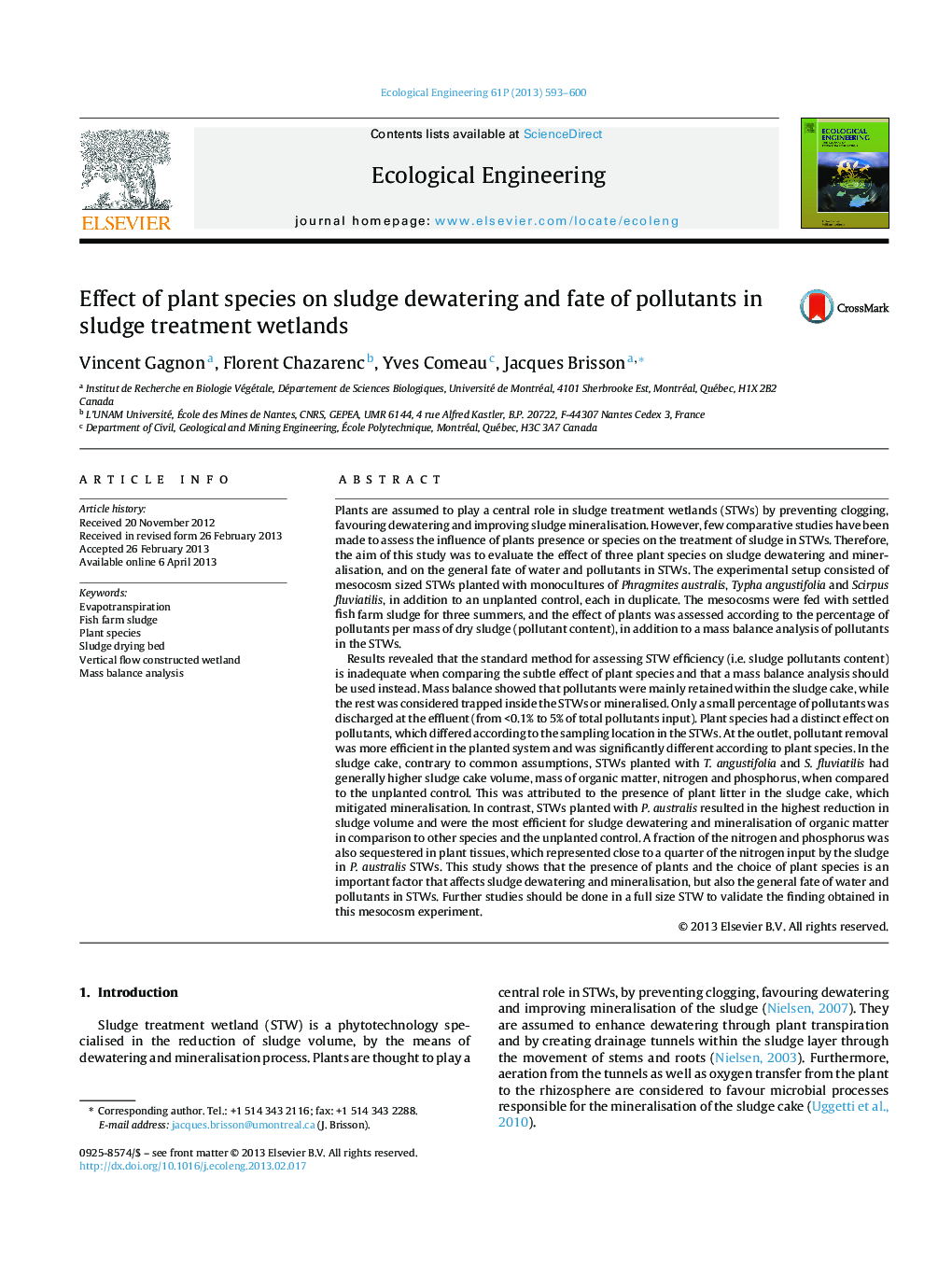| کد مقاله | کد نشریه | سال انتشار | مقاله انگلیسی | نسخه تمام متن |
|---|---|---|---|---|
| 4389527 | 1305130 | 2013 | 8 صفحه PDF | دانلود رایگان |

Plants are assumed to play a central role in sludge treatment wetlands (STWs) by preventing clogging, favouring dewatering and improving sludge mineralisation. However, few comparative studies have been made to assess the influence of plants presence or species on the treatment of sludge in STWs. Therefore, the aim of this study was to evaluate the effect of three plant species on sludge dewatering and mineralisation, and on the general fate of water and pollutants in STWs. The experimental setup consisted of mesocosm sized STWs planted with monocultures of Phragmites australis, Typha angustifolia and Scirpus fluviatilis, in addition to an unplanted control, each in duplicate. The mesocosms were fed with settled fish farm sludge for three summers, and the effect of plants was assessed according to the percentage of pollutants per mass of dry sludge (pollutant content), in addition to a mass balance analysis of pollutants in the STWs.Results revealed that the standard method for assessing STW efficiency (i.e. sludge pollutants content) is inadequate when comparing the subtle effect of plant species and that a mass balance analysis should be used instead. Mass balance showed that pollutants were mainly retained within the sludge cake, while the rest was considered trapped inside the STWs or mineralised. Only a small percentage of pollutants was discharged at the effluent (from <0.1% to 5% of total pollutants input). Plant species had a distinct effect on pollutants, which differed according to the sampling location in the STWs. At the outlet, pollutant removal was more efficient in the planted system and was significantly different according to plant species. In the sludge cake, contrary to common assumptions, STWs planted with T. angustifolia and S. fluviatilis had generally higher sludge cake volume, mass of organic matter, nitrogen and phosphorus, when compared to the unplanted control. This was attributed to the presence of plant litter in the sludge cake, which mitigated mineralisation. In contrast, STWs planted with P. australis resulted in the highest reduction in sludge volume and were the most efficient for sludge dewatering and mineralisation of organic matter in comparison to other species and the unplanted control. A fraction of the nitrogen and phosphorus was also sequestered in plant tissues, which represented close to a quarter of the nitrogen input by the sludge in P. australis STWs. This study shows that the presence of plants and the choice of plant species is an important factor that affects sludge dewatering and mineralisation, but also the general fate of water and pollutants in STWs. Further studies should be done in a full size STW to validate the finding obtained in this mesocosm experiment.
Journal: Ecological Engineering - Volume 61, Part B, December 2013, Pages 593–600